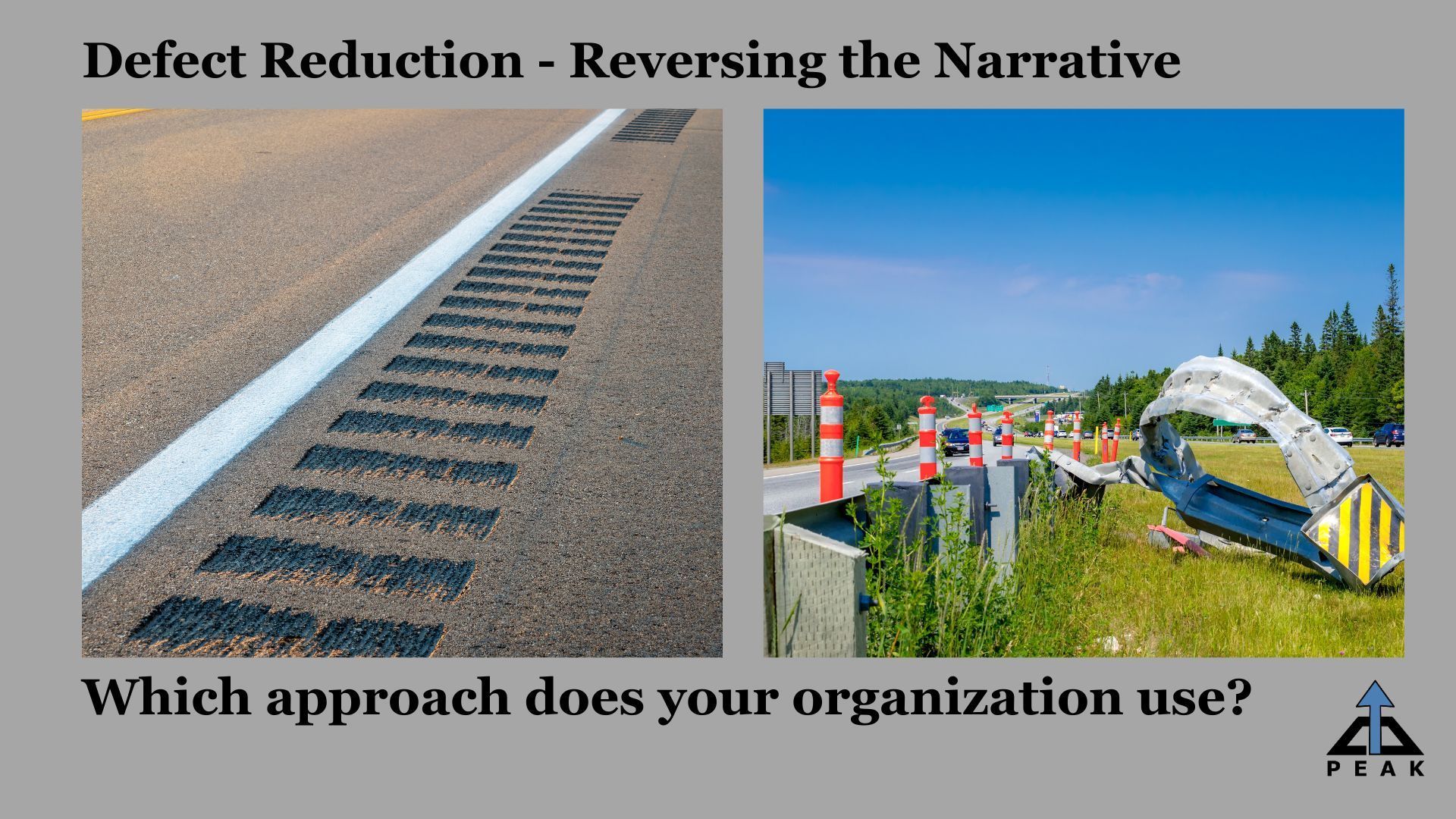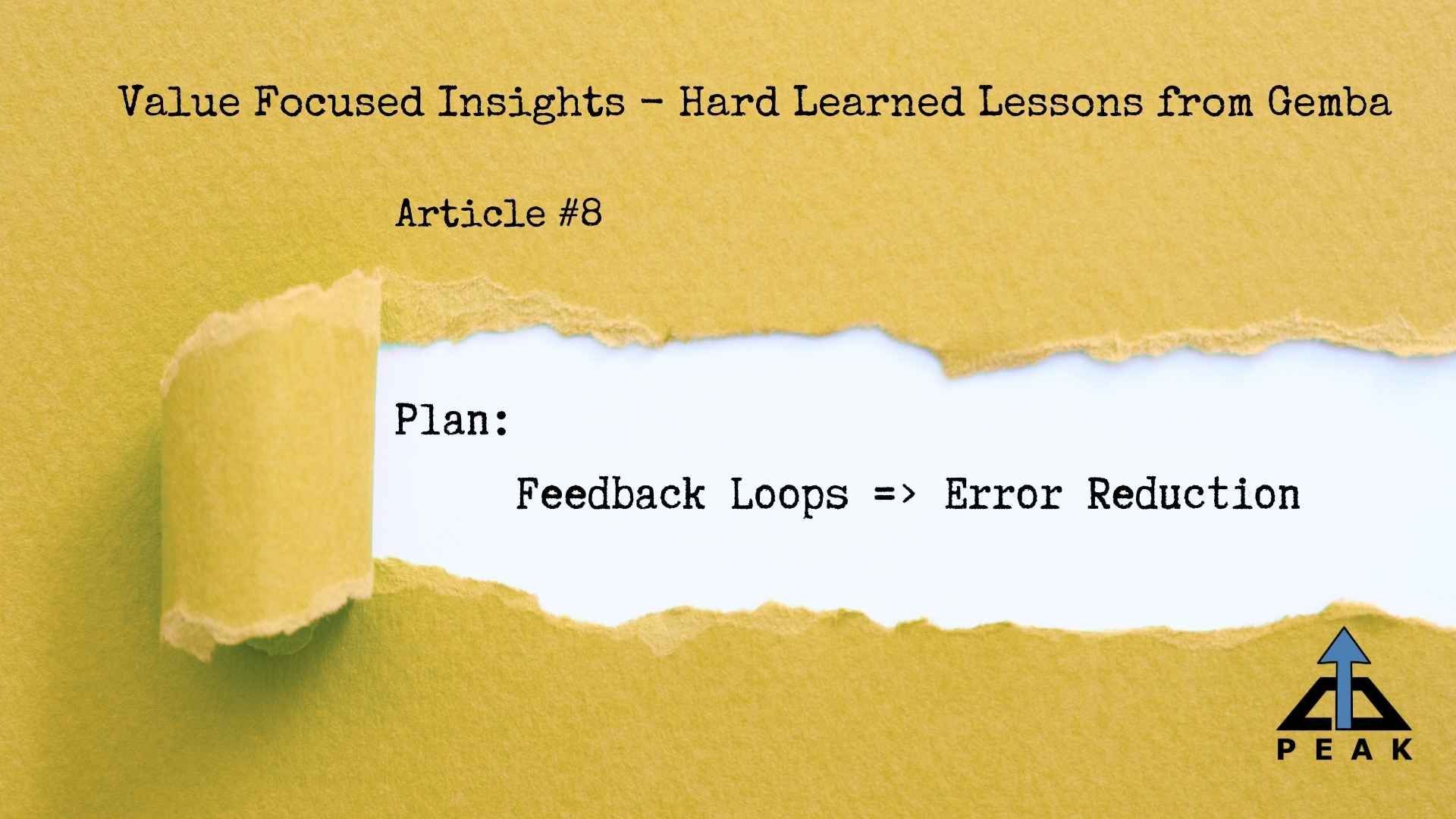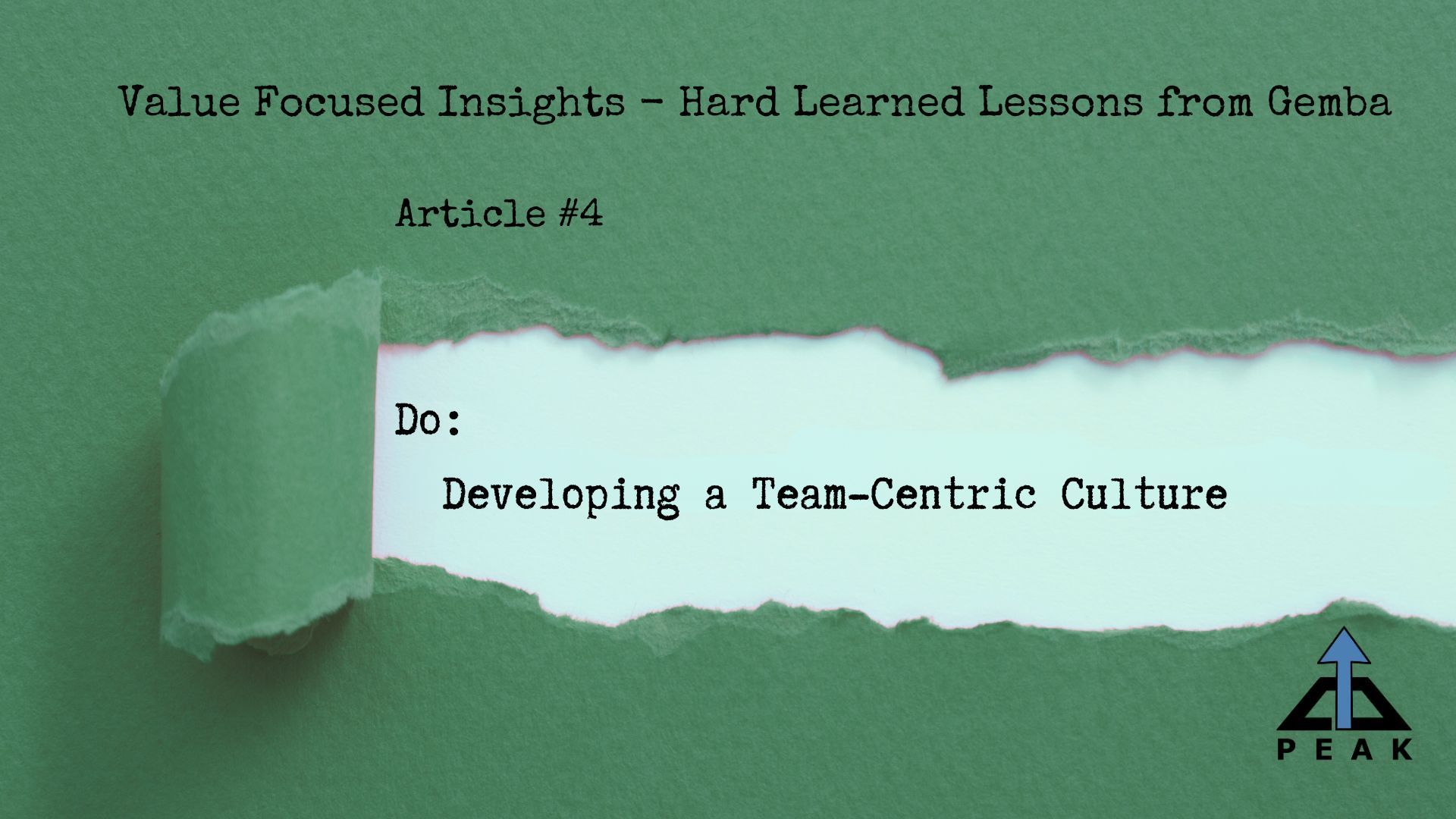Embracing Slower Times - Part 14: Defect Reduction – Reversing the Narrative
Tim Upchurch
Few initiatives can provide the positive impact on both financial and delivery metrics as defect reduction efforts can. However, the path to minimizing defects and streamlining your processes isn't always straightforward. It requires a detailed approach that encompasses everything from organizational discipline to understanding which defects to attack. In this article, I provide seven key tools to incorporate in your defect reduction initiatives to both simplify and achieve quicker results.
Each tool will serve as a building block for enhancing your organization's quality and operational efficiency. Whether you're a seasoned quality/engineering professional or embarking on this journey for the first time, this article will equip you with the insights and strategies needed to lead your organization toward quality excellence. Join me to transform defects into opportunities for growth and improvement.
For previous articles in the series, please visit our company website or LinkedIn page. As always, we’d love to hear your feedback.

Welcome to the next installment of our series on building resilience during periods of lower demand. In this article I will present my perspectives and some costly lessons about defect reduction. I spent the bulk of my career as either a process engineer or supporting process improvements from leadership positions. Quality losses were always a primary focus.
Defects can lead to rework or scrap. They are often one of the primary reasons behind poor financial results and missed deliveries. Most organizations consume a significant amount of their physical and intellectual capacity in dealing with the result of poor quality. Quality gaps may appear minor at first glance, but when you add up all the extra resources being consumed - they could account for well over 50% of your total cost and time.
There are many schools of thought and tools available in reducing defects. I am not going to go into depth on specific tools that you can readily find better information and training elsewhere. The goal of this article is to communicate some key lessons I’ve learned on how to get results quicker and make sure that they stick. Most of these are simple to incorporate but often skipped over in the heat of the moment. When management focuses on defect reduction as one of their key initiatives, it is not uncommon for people to want to get results fast. This can cause them to immediately jump to solutions without taking the time to fully understand the problem. Let’s start there…
Step 1: Validate Your Quality Systems Are Intact
Your quality systems are the guardians of product or service excellence. They encompass policies, processes, and procedures that ensure your process results meet specific quality standards. However, systems can deteriorate or become outdated over time, leaving gaps that may result in defects.
To fortify your defect reduction strategy, regularly validate that your quality systems are not only intact but also effective. Are they aligned with industry best practices and standards? Do they address current customer requirements? Remember that you are being paid to meet the accepted quality criteria – you are NOT required to produce perfect products.
I have seen too many teams either misunderstand their criteria or believe they are protecting the customer and either scrap or rework items that are perfectly acceptable and meet all the requirements. They will spend 2X to 5X more to manufacture higher quality levels than the customer is paying for. This is overprocessing waste, plain and simple.
I recommend making sure your process is capable of meeting quality to some high sigma level. Seek to understand your requirements and build an inspection system that works for the full range. Make sure your inspectors or inspection systems are both not rejecting good products and not allowing bad quality to pass through.
To do this, your inspection processes should be able to pass an R & R inspection. An incapable inspection process will lead to missed production and financial targets. It will produce misleading results and you will constantly be reacting to opinion, misinterpretation and chasing noise. If your inspection process is not capable – you must upgrade its capabilities to reduce both Type I and Type II errors or remove the inspection. Don’t introduce inspection processes that are not valid.
Continually assess your systems through internal and external audits, seeking opportunities for refinement and enhancement. Ensure that employees understand and follow these systems consistently. Your goal is to create an environment where the defects you identify are genuine and not a result of system failures.
Another key point is to solidify how defects are being coded into your quality information systems. Are inspectors correctly identifying and classifying the defects they find? A good defect manual with photos that also properly defines each type of defect can help make sure inspectors are capable in coding data. Having too few/many defect codes, or not controlling what codes can be seen in each inspection area can also be problematic. If you use remarks or open textboxes in your data entry systems, make sure you are getting useful data input by your teams.
Hint – operators learn quickly when their input is not being used and will look for shortcuts on how to bypass systems. It’s hard for problem-solving teams to use data entries such as “…”, “qqq”, or “zzz”.
Step 2: Validate Your Process Is Being Followed
One of the cornerstones of effective defect reduction is ensuring that your established processes are consistently followed. Even the most meticulously designed processes can fall short if not executed correctly.
If you have been following along with this series, by now you should have already developed detailed standardized work. Do you also use Leader Standard Work to ensure compliance?
Regular audits and process adherence checks are essential to confirm that employees are following predefined procedures. These checks act as a quality assurance net, catching deviations before they lead to defects. Engage with your team to understand the reasons behind any lapses. Is it a training issue, unclear instructions, or something else entirely? Collaborate to address these root causes, reinforcing the importance of process adherence.
When your team is aligned and processes are faithfully executed, the discipline needed to support good defect reduction efforts is in place. In one of my previous roles, whenever a process would fall badly out of control, we would eventually get a visit from the VP of Engineering. He would gather us around a big table and as a group we would meticulously review all the process instructions. Then we would walk the entire process, front to back. Along the way, he would note all deviations – clearly providing feedback on the tools we used for achieving control. It was always painful, but it was also often that simple…
Step 3: Review Your Process for Variation and Sources of Hard Work
Excessive process variation is a breeding ground for defects. Review your processes on a regular basis to identify potential sources of variation. This may include equipment performance, lack of process
control, inconsistent materials, or unclear methods/instructions. Make sure you observe all shifts and operator experience levels. If you employ a training group, make sure they are incorporating best practices and techniques in their instruction methods.
Reducing variation through targeted improvements can significantly minimize defects. Work as a team to understand and address sources of hard/complicated work, especially ergonomic strain that could contribute to defects. Include the upper and lower 20% band of operators for physical characteristics such as height, strength, hand/eye coordination, etc. If you have Process Control / Process Discipline procedures, you should also validate that they can be performed with minimal variation. Operators and those directly involved in the process often have valuable insights on sources of work variation.
If your process uses fixtures, templates, or any specific tooling you will need to ensure that everyone physically can use it properly and that it is inspected regularly for wear/damage. Check to make sure that you have sufficient lighting to reduce eye strain. If there are other environmental controls required, ensure they are maintained.
I once had to travel across the country to resolve a quality problem with laminated panels not meeting dimensional standards. The process involved taking the panel out of a die and putting it onto a rubber form to cool. Sandbags were added to the top to maintain pressure during cure. Unfortunately, the surface they set the forms on was warped badly – not good when using rubber forms. In addition, there were no defined instructions of how many sandbags to use or where to place them. I also witnessed inspectors forcing panels to meet tolerance only to deflect back out when released. It took no time to find and solve.
If you remain at your desk, you will miss so many opportunities to reduce variation. Simply watching someone performing the work and addressing sources of variation collaboratively, you not only reduce defects but also enhance operational efficiency. It's a win-win approach that strengthens your organization's commitment to quality.
Step 4: Understand Your Process Capability and Control
One of your primary goals is for your process to be in control and capable. This means not only how well your process can consistently produce products or services but also how to make them acceptable to predefined specification limits. You should be using the standard process tools such as run charts to track your process for variation.
Once your process is stable, I recommend developing control charts to maintain it. These are simple rainbow charts that have pre-determined reaction plans based on how the process is performing. The chart is broken into ranges along the vertical axis – upper red, upper yellow, green, lower yellow, and lower red. The horizontal axis indicates time between readings. If your process moves from the green range to the upper yellow range, you respond by performing a predetermined reaction X. Different reactions are designed for each area except green, where you simply continue normal standard work. A reaction can be as simple as to check the fixture, validate the measurement or to perform a task to recover. This makes sure everyone responds the same to variation and helps from overcorrecting.
Imagine driving down a long straight road. To stay safe, we’ve painted lines for you to stay between – this is your goal. We don’t want you to go veer off into the woods, so we’ve built a strong metal barrier to stop that from happening. If you hit the barrier, it will most likely be costly, so we’ve added rumble strips between the white lines and the barrier. These will alert you that you are outside the normal process so you can self-correct before doing damage. In our example:
- Green = the painted lines represent normal process limits when in control
- Yellow = the rumble strips represent variation outside of normal, but still within process specifications
- Red = the barrier represents defects
Build control loops into your process to self-correct before creating defects and introduce barriers to stop the process if they can be made.
It's important when you find significant shifts in results to always check and validate your measurement systems as a first step before you go changing inputs. This is especially true for automated inspection processes.
Step 5: Generate Statistics About Your Defects
In-depth analysis requires accurate and comprehensive defect data. I’ve already discussed the need to ensure your data systems are clean. In that way you can use collected statistics on defect types, their frequency, and where they occur within your process. Additionally, establish a timeline to identify when defects are most likely to arise. Analyzing this data provides valuable insights into patterns and trends. Engage operators and other professionals in gathering data and obtaining their insights. Create an environment where feedback is encouraged and valued.
I loved using defect maps when I was an engineer. For those not familiar, defect maps show where the defects were located, what the type of defect was and how many were found. I took photos of each product type from several viewpoints and placed them on a document. The document included a legend for each type of defect by color. In the upper corner, I added a box with all the numbers from 1 to 100. Each time a part was inspected, the inspector crossed off the next numbered box. If they discovered a defect, they would place a small colored dot sticker corresponding to the type (per the legend) on the photo view. I would pick up the sheets every couple of days. Something similar could be very easily done now online.
There are many great tools available now that can assist in presenting large datasets in visually meaningful ways. They are very powerful and can provide great insight – if you know what you’re doing. I always found it helpful to add an extra black belt to each project to specifically challenge team logic and math as a devil’s advocate. Statistics can be confusing to some and counterintuitive at times. It is always better to make sure that your team is not chasing normal variation before running experiments.
Step 6: Not All Defects Are Financially Equal
Imagine you manufacture smartphones. A minor cosmetic scratch might not affect functionality and can be easily tolerated if internal, but a defect in the battery that leads to fires poses a catastrophic financial and reputational risk.
To prioritize your defect reduction efforts, you may want to understand the impact from different types of defects. If so, start by defining categories, like critical, major, and minor. Assign cost or other factors to each category. This approach allows you to focus limited resources on addressing high-impact defects first, thereby protecting your bottom line or brand reputation as necessary. The goal isn't merely reducing the quantity but optimizing your quality investment by tackling variation where it matters most.
Other factors to consider in analysis may include:
- Rework Costs – by resources and time
- Rework Success Rate
- Downstream Customer Costs / Impact – external vs internal
- Upstream / Downstream from your constraint? (reference Goldratt’s “The Goal”)
- Warranty Costs
What you prioritize will depend on your specific business case. A point to remember is that most people will tend to default to internal measures in times of uncertainty. This often leads organizations to prioritize targeting financial incentives, which could lead to conflicts with customers. My suggestion is to make your decision only after reflecting on your goals with each of your stakeholders.
Step 7: Solve to Root Cause for Sources of Variation
Addressing defects is like treating an ailment; you need to target the root cause, not just the symptoms. Root cause analysis, often accomplished through techniques like the "5 Whys," helps you delve deep into the underlying reasons for defects. See our previous article on problem-solving for more details.
Engage your team in this process. Collaboratively investigate defects to uncover the fundamental issues. This not only leads to more effective solutions but also fosters a culture of continuous improvement.
Sometimes, challenging conventional wisdom and adopting first-principle thinking can lead to interesting insight. By questioning assumptions and revisiting your processes from the ground up, you gain a deeper understanding that can lead to innovative solutions.
Conclusion: Transforming Defects into Opportunities
Defects can be elusive adversaries, lurking beneath the surface and negatively impacting your organization's performance. But they are not invincible. With the right strategy and commitment, you can transform defects into opportunities for growth, efficiency, and quality excellence. The seven steps we've explored in this guide provide a roadmap for your journey toward defect reduction and process optimization.
Defect reduction isn't just about patching up problems as they arise; it's about forging a path to excellence. The pursuit of quality is an unending journey, but it's also a journey of continuous improvement and growth. Embrace the challenge of defect reduction, and you'll find that it's not just about fixing what's broken; it's about building a culture of quality and excellence.
For organizations seeking expert guidance and support in their defect reduction endeavors, connect with us at Peak Productivity. Our team of experienced professionals is dedicated to helping you achieve excellence in quality and operational efficiency. Together, we can build a future where defects are not just reduced; they are eliminated.
Peaks and Valleys.....












